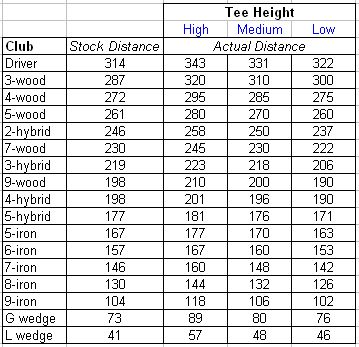Although this “feature” has been in existence all this time, it wasn’t widely known to the Golden Tee community until 2016. It has specifically been showcased on Elkhorn #1, enabling enlightened players to drive this green under otherwise impossible circumstances. If you’re able to pull it off, you can add quite a bit of extra distance to your drive.
Due to a glitch in the software and the mechanics of the trackball during an A1 shot, players have figured out a way to boost their drives by 50 yards or more if they can pull off this shot. It’s difficult to explain and tough to execute on a consistent basis. It can be done with any trackball, but it’s more difficult to execute on a smoother ball. The specific spin angle which “loads” the shot can also vary by trackball.
So how do you do it? Without sufficient personal experience, here is a collection of advice and instruction I’ve gathered that can help you experiment and hopefully figure this thing out. Please feel free to share any more tips or clarification that can help our community!
Start by pulling “full A”, which means above the A, almost sideways, and then stop the ball. Now start spinning towards the full A and start working your way down towards normal A until you find the angle that works. Keep spinning the ball as you try different angles between full A and A. You’re keeping an eye on the club above your golfer’s head, and what you want to observe is the club head dropping a tad and then popping right back up to the top, kind of like a pump fake or a bobble. When you see this happen, the shot is “loaded” and you’re good to hammer it out to 1 to achieve the turbo drive.
Here’s one video — notice how the club head drops ever so slightly after some of the spins to A…when you get this to happen, you’re good to go…players like to spin a few more times and then hammer it out to 1 for the shot.
Here’s a much more efficient example with a trackball and a screen view.
You’ll notice in the video that he uses a consistent speed and rhythm while looking for the bobble. If the club head starts coming down, that’s not it — the actual motion you want to see involves the club dropping down a pinch but then returning to the top.
You may not know how many spins it takes — it can happen immediately or after a few spins. You’re just looking for that “blip” of the club. If it quickly twitches, spin it another time or two and let her rip towards the 1. If the club drops more then a twitch, you should start over. Hit the spin button and repeat the process. Or, if you don’t see it happen after 15-20 spins, then stop, start over and try again. Patience is key.
Furthermore, if you can get the club head to pop a second time, it will go even farther. I think this is about finding the right angle on your particular trackball that activates the feature, and exploiting it to your advantage.
Elkhorn #1 is the best place to try because there’s no penalty if you don’t get it. A normal drive is just fine. But above and beyond this hole, you can start to see how this drive can be applied to numerous other holes.
Another caution about what you DON’T want to see, which is the club head coming all the way down during this process. That can result in a tragically SHORT drive, so just keep an eye on what’s happening with the club head, and keep practicing and watching your results.
Here are some YouTube results when properly executed, from standard to extreme results:
Example 1
Example 2
Example 3
Example 4






